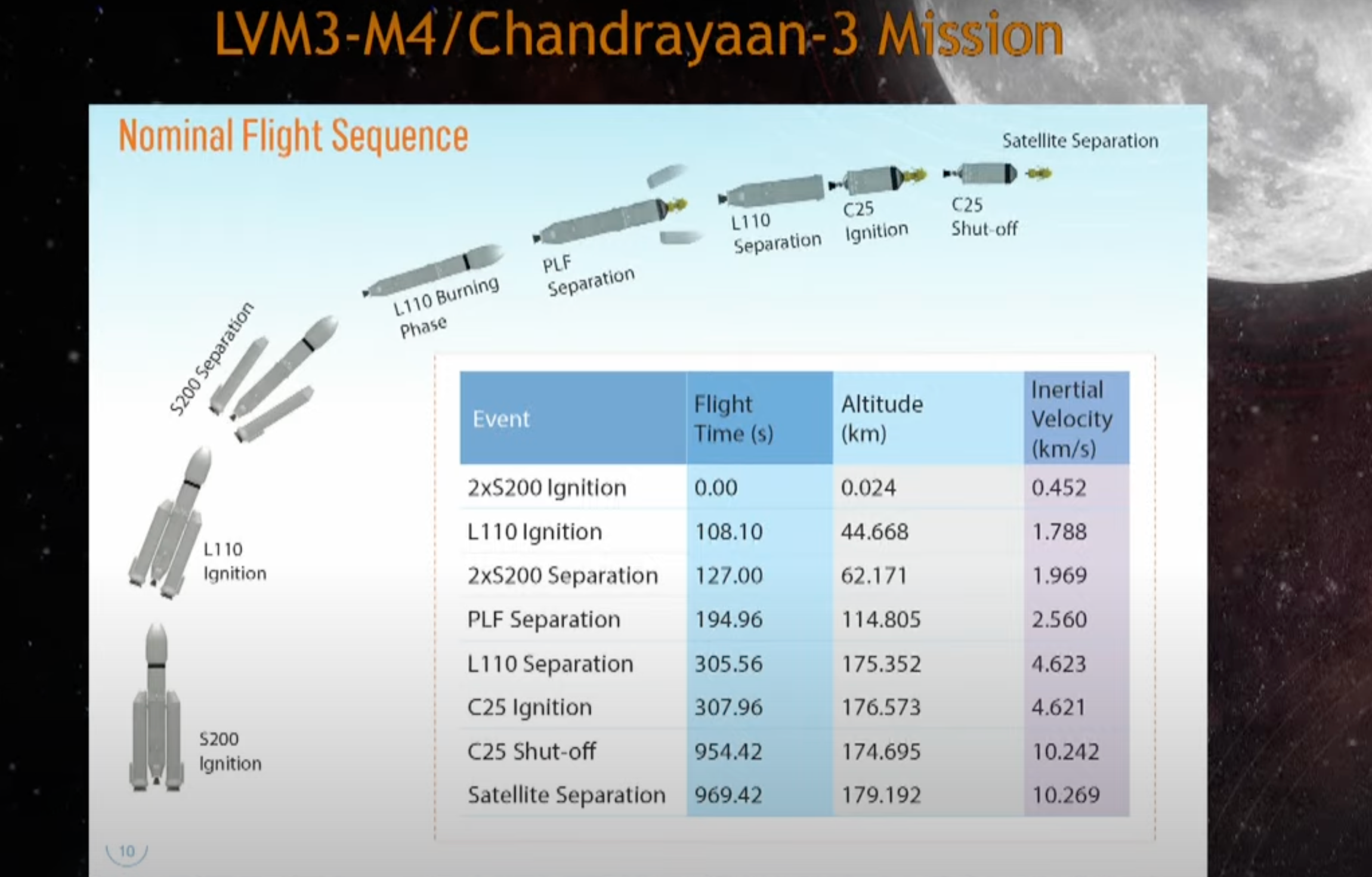Chandrayaan-3: India launches historic mission to Moon
Succesful landing on Moon would make India first to place rover on lunar south pole
India’s space agency has successfully launched a rocket that aims to land a rover at the Moon’s south pole, signalling its arrival as a space power.
The Indian space research organisation’s (ISRO) Chandrayaan-3 mission, carrying a lander and rover, blasted off at 2.35pm local time aboard the LVM3 rocket from India’s main spaceport, Sriharikota, in the southern state of Andhra Pradesh.
“14 July 2023 will always be etched in golden letters as far as India’s space sector is concerned... This remarkable mission will carry the hopes and dreams of our nation,” Indian prime minister Narendra Modi tweeted on Friday, ahead of the launch.
Watch the launch live here on The Independent’s YouTube.
ISRO confirmed that the spacecraft successfully entered its planned orbit around Earth, adding that with a set of carefully planned manoeuvres in the coming days the vehicle is expected to land near the Moon’s south pole around 23 August.
“Congratulations India. Chandrayaan-3 has started its journey around the Moon. Our dear LVM3 has already put the Chandrayaan-3 craft into its intended orbit,” said S Somnath, chairman of ISRO.

A successful landing would make India only the fourth country after the US, the former Soviet Union and China to land a probe on the Moon, and the first to do so near the lunar south pole.
This is a region of special interest among space agencies and private companies due to the confirmed presence of water ice that could support potential lunar mining missions and Moon bases.
ISRO will also conduct science experiments on the lunar surface as part of the latest mission, whose cost comes to about £63m ($82m).
Among the instruments aboard the lander are a probe to measure the Moon’s surface thermal properties, dubbed the Chandra’s Surface Thermophysical Experiment (ChaSTE), and an instrument called ILSA for measuring lunar seismic activity.
The rover and lander will conduct ranging studies and analyse the gas and plasma environment of the Moon to provide data for planning future missions.
If successful, the mission may also bring more investment to India’s growing number of space startups and institutes.
Join our commenting forum
Join thought-provoking conversations, follow other Independent readers and see their replies
Comments
Bookmark popover
Removed from bookmarks